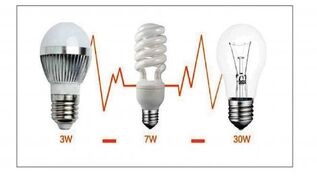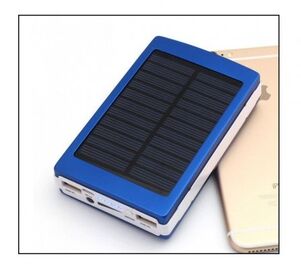Consumers are being driven by rising energy prices and environmental issues to save electricity. Consumers may view the environment as a whim or a scam, but if that adds up to costs it must be expected.
Of course, energy will not go anywhere, its consumption will increase, the number of sources will increase, and the most harmful will be replaced. Savings do not mean a restriction, but a sensible use. You can economically spend a hundred kilowatts and waste a hundred watts.
Saving electrical energy is achieved through a sensible (not disorderly) organization of its use. This is the result of planning activities. And the charlatan devices and "methods" advertised on the Internet sometimes have nothing to do with storage. These methods can only cause fire and electric shock.
Energy consumers in descending order
All electricity consumers can be classified in some way according to the amount of energy consumed (energy intensity). In this way, for example, in descending order:
- heating devices;
- lighting equipment;
- electric motors;
- computer science;
- Electronic devices and communication devices.
This classification is also justified in the household: Most of the electricity is consumed by kettles, ovens of various types - grills, toasters, electric stoves, then irons, dryers. A lot of energy is used for lighting purposes. The lighting competes with refrigerators (compressor motor).
An ordinary home PC also consumes a lot, it is quite a competitor to the refrigerator. Against this background, TV, security and fire alarms as well as chargers for mobile communication devices consume the least.
The conversion of electricity to heat is the most "noticeable" result that can be achieved, but it is also achieved with full efficiency. when such a conversion is required. The efficiency of iron is almost 100%. With light sources, the situation is much worse - even with LED lamps the efficiency is only 15% (we can speak of a proximity of 100% only for quantum phenomena in a semiconductor crystal of LEDs, the rest is used for heating wires and losses in additional devices: Driver).
Savings on heating devices
How can you save energy without denying yourself the benefits of civilization? Since heating devices, as we can see, "use electricity" above all else, this is the most important resource for saving. Energy-saving methods in everyday life are indirect, but no less important for them. First of all, the heat must be fully used. For example, it is extremely unwise to boil water in a metal tank in a cold room that does not need to be heated. It is better to do this where the heat spreads in the living spaces.
Due to the good thermal insulation of the premises, the resulting heat must be stored completely and for as long as possible. In European countries, for example in Germany, they are even punished for poor isolation.
With an additional tariff for energy and the ability to store heat, night-time operation of water heaters and other heating devices is most useful. During the day, the heat is kept at a sufficient level. This is particularly beneficial if residents work or study during the day. Through the nightly energy consumption, the consumers also offset the load on the power grid, which has a positive effect on operability and operating costs. This gives us hope for lower prices.
Savings on lighting

Let's start with a reminder that you need to turn off the lights where they are not needed. And think about the location of the light sources (preferably with the help of professionals in the matter) in all rooms, even if they are utility rooms. Then we turn to the sources of light that exist in our time.
First of all, it should be noted that we live in a fertile time of rejection of voracious incandescent lamps that heat more than glow. The widespread use of fluorescent light sources (daylight) results in very significant energy savings, two to three times.
Fluorescent lamps in the form of 40 and 80 W tubes were widespread in the past (since the 1970s), but mainly in public and industrial buildings.
Modern "energy-saving" household fluorescent lamps in the E27 base are the same tubes with mercury vapor and fluorescent material from the inner surface of the glass. However, they are twisted into a round spiral and connected via an electronic miniature ballast in the base, which fulfill the same functions as the iron choke and the gas discharge starter mentioned above.
However, fluorescent lamps are already being replaced by LED lamps, which consume two to three times less energy than fluorescent lamps with the same luminous flux. They are still a little more expensive than other types of lamps, but the market is not yet saturated with new products. The cost quickly pays for itself due to the significant savings from using them.
Both fluorescent lamps and LED lamps have a very broad spectrum that approximates daylight. This is due to the use of a primary ultraviolet source in both cases. LED lamps also use luminescence and the ultraviolet light is converted into a mixture of all the colors of visible light. Only with LED lamps is ultraviolet light not generated by mercury vapor atoms, but by a semiconductor crystal.
Additional options for saving energy when solving lighting problems are automatic switching on and off. The person is forgetful, but the technology is not. The use of dimmers (dimming devices), photo relays, timers and motion sensors minimizes unnecessary lighting costs.
All of these products are available in stores, sold with guarantees, certificates and instructions, and have long ceased to be an exclusive handicraft only available to qualified radio amateurs who made them for their home.
electric motors
Electric motors can be found in everyday life, especially in refrigerators, washing machines and air conditioning systems. There are also pumps for heating systems and pumps for wells. All other cases: coffee grinders, drills, etc. do not deserve any consideration, as they are seldom switched on for a short time.
The reduction in energy consumption in continuous operation of electric motors is achieved either through their periodic shutdown (refrigerators and air conditioning systems) or through the use of frequency converters for asynchronous motors.
The latter are sometimes used to control pump motors for water supply and heating systems. Since the operation of electric motors is usually associated with heat (cold), the saving measures are reduced to the fact that there are fewer reasons to turn on the motors: keep the doors, vents, doors of refrigerators and freezers closed.
The power consumption of electric motors in everyday life is relatively low - you can ignore the notorious "cosine phi" of about several hundred or even ten watts here, since the household consumer does not pay for reactive power.
Asynchronous motors, however, have one feature: a large starting current that is 5-7 times higher than the rated current. This suggests that the less often such motors are started, the better and justifies the use of frequency converters if they are acceptable (the cases of refrigerators, especially air conditioners, do not apply to this). And don't put hot pots in the refrigerator.
Electric motors used in household appliances can be classified according to power and duty cycle (proportion of time in a duty cycle) as follows:
- refrigerators, air conditioning systems (150–450 W, 20–50%);
- heat pumps (60-200 W, 40-100%);
- kitchen appliances (50-500 W, short term);
- fan (10-30 W, up to 100%).
Submersible water pumps are used very rarely and have a significant performance. They are used in individual homes and cottages for wealthy owners. But even there, the questions of the economy do not come last. Therefore, the operation of pumps in such systems is optimized by hydraulic accumulators, frequency converters and controls that control the operation of the water supply. Everything happens automatically.
computer, television and phone chargers

Game computers can roll up the counters well not only because of the fast processor, but also because of the powerful graphics card that works 20 hours a day (time for the game goes by quickly and as a student you may not notice howretirement is approaching). . . . Some people also use graphics cards to make money.
A typical office computer in quiet mode consumes around 200 W, a laptop - 40-60 W. This is comparable to a television and not so important. Even so, it doesn't hurt to manage the power supply to such devices, especially since such capabilities have long been provided in modern intelligent electronics.
Chargers for telephones and other mobile devices can be operated with "alternative" energy sources: solar panels and small wind turbines, which are fed by suitable converters (of course 5, 12 and 20 VDC). The latter can be used to charge laptops. )
Alternative sources in everyday life are still not widely used, their capacity is very modest and the price is high. Nevertheless, you have to start somewhere and advice on saving energy in everyday life should take this into account.


























